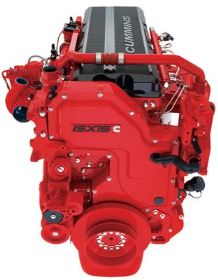Measures to take in maintaining your motorhome’s diesel engine.
By Brett Wolfe, F252125
October 2012
Taking care of your diesel engine’s turbocharger is fairly easy, provided that you follow a few simple steps.
The first part involves starting the engine and allowing it to warm up to the proper operating temperature. If the ambient temperature is less than 40 degrees Fahrenheit and it’s convenient to do so, use the block heater for approximately 2 hours. It’s even more important to utilize the block heater if the temperature is below freezing, in which case you would want to leave it on for 2 1/2 to 3 hours. This makes starting the engine easier, but just as critically, it allows the oil to flow better, since we all know warm oil is less viscous.
Start the engine per your engine manufacturer’s recommendations. In the case of most modern diesel engines, you are instructed to wait long enough for the intake manifold heater to reach temperature.
After running the engine for 30 to 40 seconds at low idle, use the cruise control to select high idle — approximately 1,000 to 1,100 rpm. Continue to run the engine at high idle until air pressure is fully built. If you have to travel a short distance at low speed, such as when leaving a campground, you can roll on. However, if you have to pull out into freeway traffic right away, continue to run the engine at high idle until the temperature gauge starts to move off the cold reading.
From the turbocharger’s standpoint, it is important to avoid using too much throttle until the oil viscosity has thinned out enough to supply good oil flow to the turbocharger (about the time the coolant reaches normal operating temperature). In the real world, drive gently and never push past light throttle in fifth gear (with a six-speed Allison transmission) until normal coolant temperature is reached. Once the motorhome’s engine is at the necessary operating temperature and you can drive with open throttle, there are no special issues to worry about.
When shutting down the engine, it is critical to allow the turbocharger to cool down. That means allowing time for it to stop spinning and, more importantly, providing an opportunity for the oil that has been super-heated in the extreme environment of the turbocharger to continue circulating as the housing cools. This prevents oil from being “trapped” in the hot turbocharger where it can “cook,” literally turning into coke. Coking can block oil flow through the turbocharger over time. Depriving the bearings of oil flow is a sure formula for killing them and, therefore, the turbocharger.
However, many people get carried away with unnecessarily long cool-down periods. Yes, if you just pulled a 6 percent grade and immediately exit into a freeway rest area, the turbocharger needs to idle for 3 minutes (a lot longer by the clock than it seems). But, if you pull off the highway, drive at low speed to a campground, and then idle through the campground to your site, the turbocharger will be adequately cooled, so you can turn the engine off as soon as you are parked. And if you are the third coach waiting to check in, you can safely turn off the engine after allowing it to idle for another 2 minutes or so.
Maintaining the turbocharger requires changing the oil per your engine manufacturer’s recommendation. This means once a year or when you’ve reached the prescribed mileage. And, of course, use oil that meets the MIL (United States military) specs prescribed by your engine manufacturer (most commercially available oils for diesels are fine).
Be aware that other systems also affect the turbocharger (as in any engine). Overheating the engine — gas or diesel — will accelerate coking.

